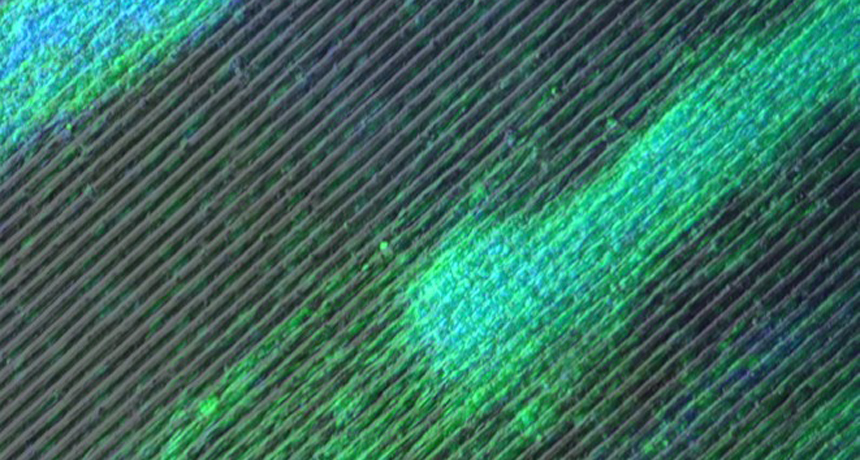Groovy surface changes cells’ state
Scientists use physical environment to reprogram cells

Embryonic stem cell-like colonies (stem-cell marker, green) grow on microgrooved surfaces.
Song Li Lab
Scientists use physical environment to reprogram cells

Embryonic stem cell-like colonies (stem-cell marker, green) grow on microgrooved surfaces.
Song Li Lab